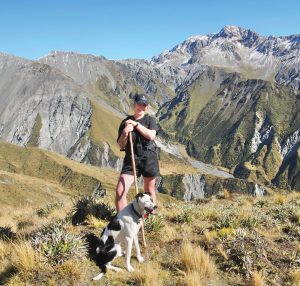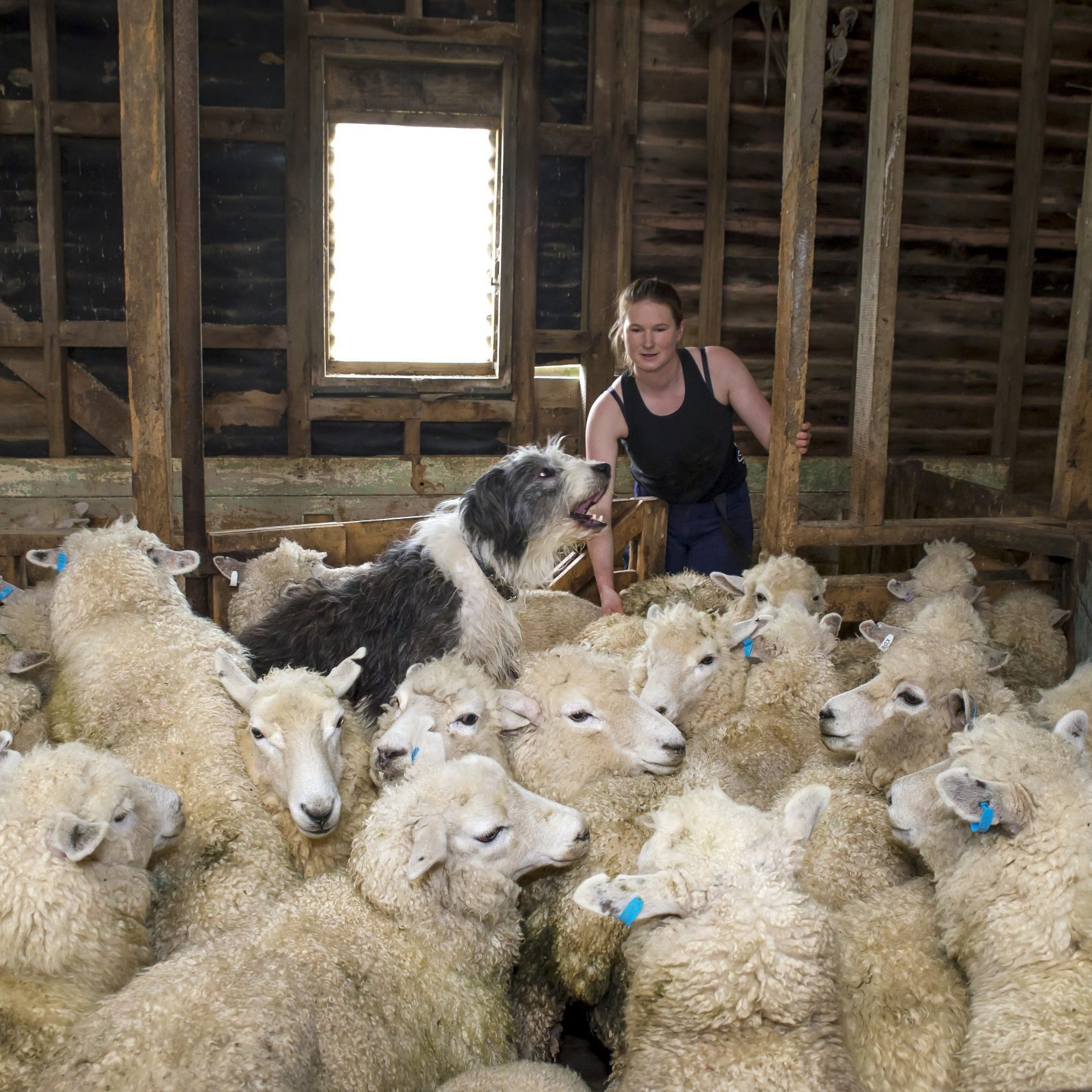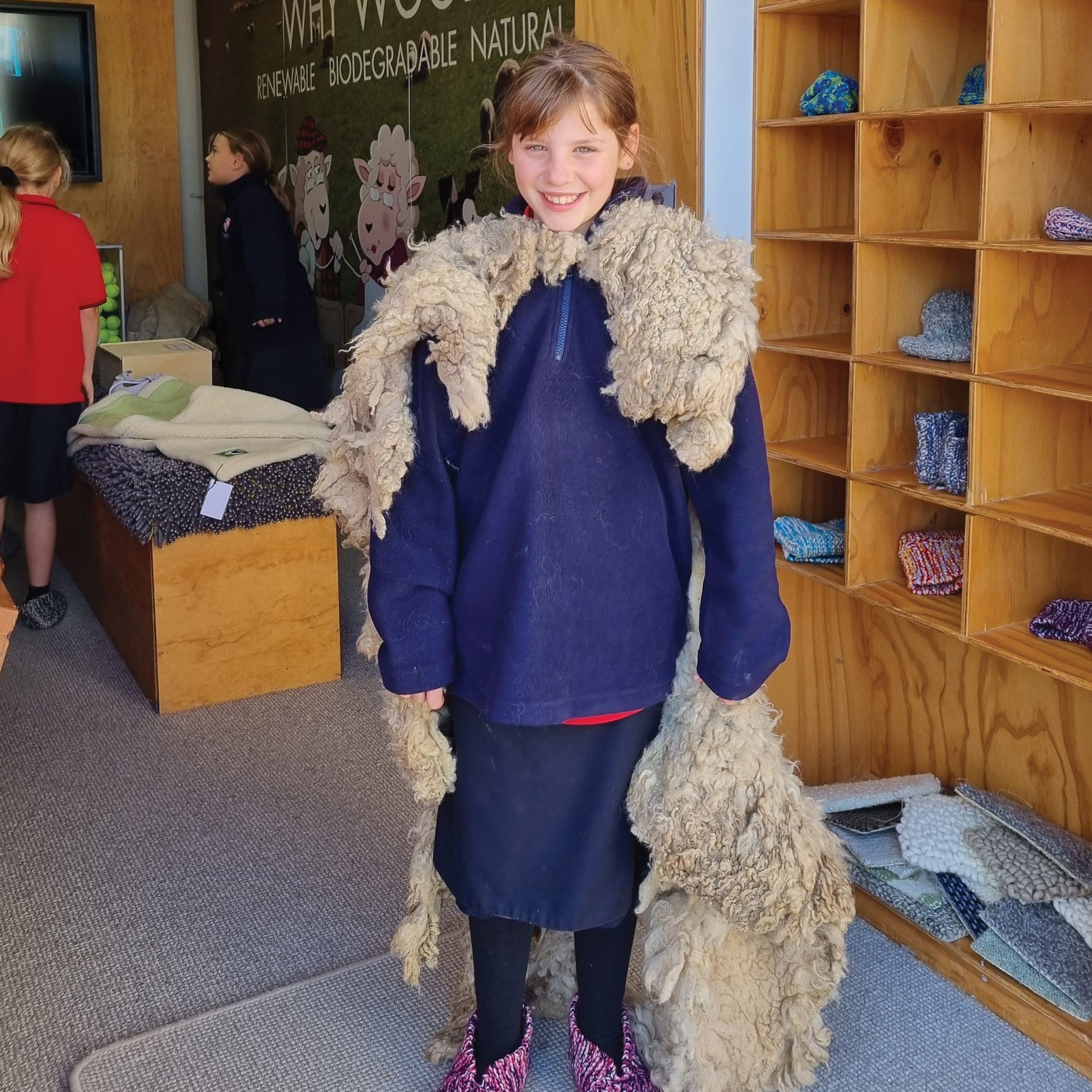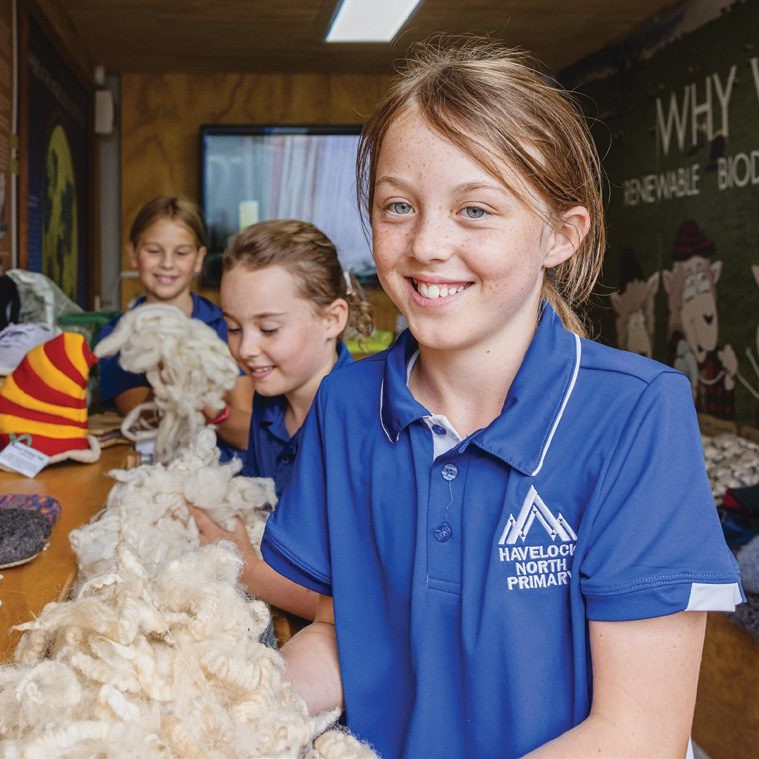A young Christchurch engineer is planning to still take time off to class the wool produced on her family’s sheep station. By Joanna Grigg.
Maria Todhunter started shed handing at her family’s Lake Heron station, alongside the rousies in the school holidays. By the time she was 17 she’d worked her way up to the classing table, learning the art alongside her grandfather, Bob Todhunter.
Now 22, Maria has just received her official stamp of approval from the NZ Wool Classers Association – her own stencil with its owner/classer Number FM2207.

This year she classed for 15 days in total, with shearing including Merino ewes, wethers and hoggets. Time off might prove tricky next year, as she starts full time work with WSP Engineering Consultancy in Christchurch. She completed a mechanical engineering degree in 2021, sometimes racing back from the shed to complete an exam or assignment.
Whatever the hurdles, she’s determined to continue classing the Lake Heron clip when she can.
“I am hoping to take some time off work for classing next year. The company see it as a positive having different interests and the skills to run a shed.”
Maria enjoys many parts of high-country farming but it’s the wool classing that fascinates her.
“And it has been so special to be taught by Bob.”
“I learnt how to class by picking up a fleece and walking towards a bin while watching Grandpa’s face. If it was wrong, he’d get a look on his face, like ‘what are you thinking’?”
This season she was the youngest in the shed but held the most responsibility for the wool.
Bob taught her by first explaining all the different parts of the fleece – neck, back, skirtings. She has had two years of guidance from visiting classer Nicola Peddie, NZ Merino Company, who helped explain contract specifications and completed the Shed Inspection with her.
“Nicola has a background in wool classing and would come up every shearing to talk about the micron specifications and the things to look out for, like vegetable matter.”
Fleeces low in vegetable matter Lake Heron fleeces are generally low VM but the backs are removed if blown sand or matagouri leaf is present.
“We take a section out but don’t take too much, as often there is a big price difference.”
Maria says it is very hard to pick a micron by eye so it’s more important to know where the fleece fits in comparison to other fleeces.
“This is an advantage of an owner classer – you have the constant relationship with the wool and can see if the mid staple might be stronger than average.”
Lake Heron ewes clip between 20 and 22 microns. Maria says she has had a few trips to Cleardale stud, Rakaia Gorge, with her father Philip to choose rams but is not so involved in the genetic selection side.
“I can see a picture of the feeding management through the year, when I look at the fleeces on the table.”
She has spent a fair bit of time defending high country farming to her student friends.
“There are misconceptions about farmers that we don’t care, but I consider myself an environmentalist.”
The Todhunters spend a fair bit of table-talk time discussing the future of farming. This made Maria well prepared when asked to speak to the Environment Select Committee hearings on the Crown Pastoral Land Reform Bill.
“I said to Dad I’d come along to the hearing to support him and watch, then the next minute I was sitting in front of everyone and being asked if there was anything I had to add!”
Maria spoke from the heart about what the property means to everyone in her family and her belief that their farming methods are good environmental practices too.
“At Lake Heron we have every incentive to cherish and nurture the environment to make the most out of the farm and tourism aspects.”
As to her future involvement with the farm, she is not really sure at the moment and is focusing on engineering.
“Dad had another career and came back to the farm, so I’m pretty open-minded.”
Support for classers
When Maria was training in wool classing, woolclasser Nicola Peddie was at her side. In her visits with Maria, during shearing at Lake Heron, Nicola would talk about each fleece that came across the table.
“Having a consistent process for checking wool characteristics is key for consistency across the entire wool clip.
She says Maria is very methodical in personality anyway so this was naturally formed quickly.
Nicola would then leave her to class for a while, then go over the wool bins to ensure she was on the right track and staying consistent.
The other aspect of training was meeting the contract requirements. Nicola said the classer has to show they can lead the wool handling team and work closely with the head wool handler, to achieve the best outcome with the resources available.
As area manager and/or wool representative, Nicola completed a classing report for Maria. This includes an in-shed inspection as well as test results.
“The shed inspection involves checking what is required for the wool clip, and seeing if the preparation and oddments getting removed are consistent with this.”
Nicola says the dollars involved are significant.
“Over-preparation or under-preparation can make a significant difference across the total value of the wool clip.
“It takes into account the likes of micron, length, strength, colour, style.”
The report also involves ensuring the wool specification sheet is completed clearly and correctly. Lines are then weighed, cored and grabbed and the sample matched against the written specifications. Wools are then typed and allocated accordingly for brand partners, Nicola said.
“This completes the process and gives us the ability to complete the wool classer report which is then submitted back to the Wool Classers Association.”
Nicola says all growers are offered a pre-season meeting to look at contract wool specs and opportunities.
“As part of this process some growers may like to include the wool classer.”
Nicola says when she was completing her NZ wool classers certificate, NZM were instrumental in the support they provided.
“Having a passion for the fibre is the foundation of this, and Maria genuinely has it.”
She says Maria has been fortunate to learn off her grandfather Bob who has more experience and wool knowledge than most in the industry.



